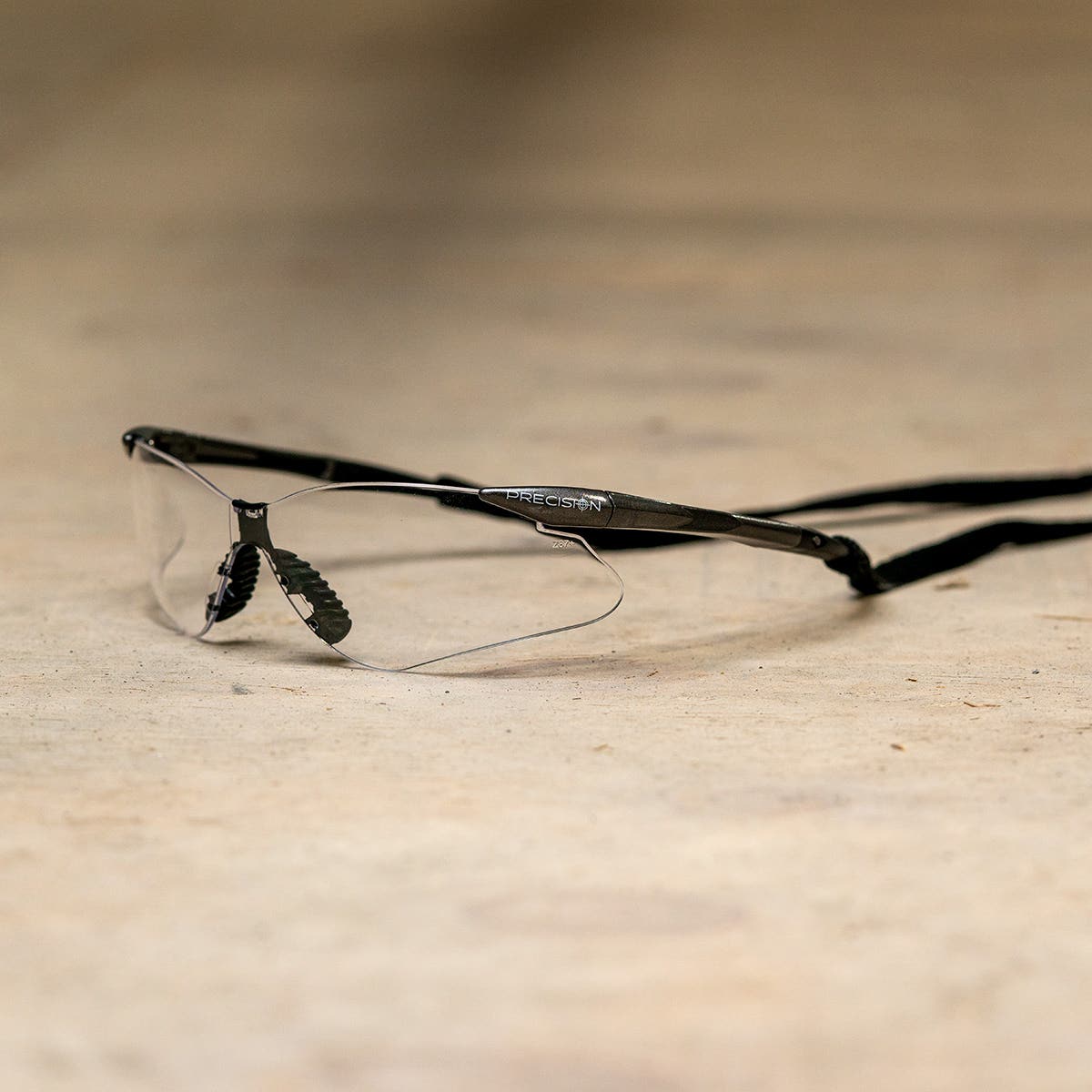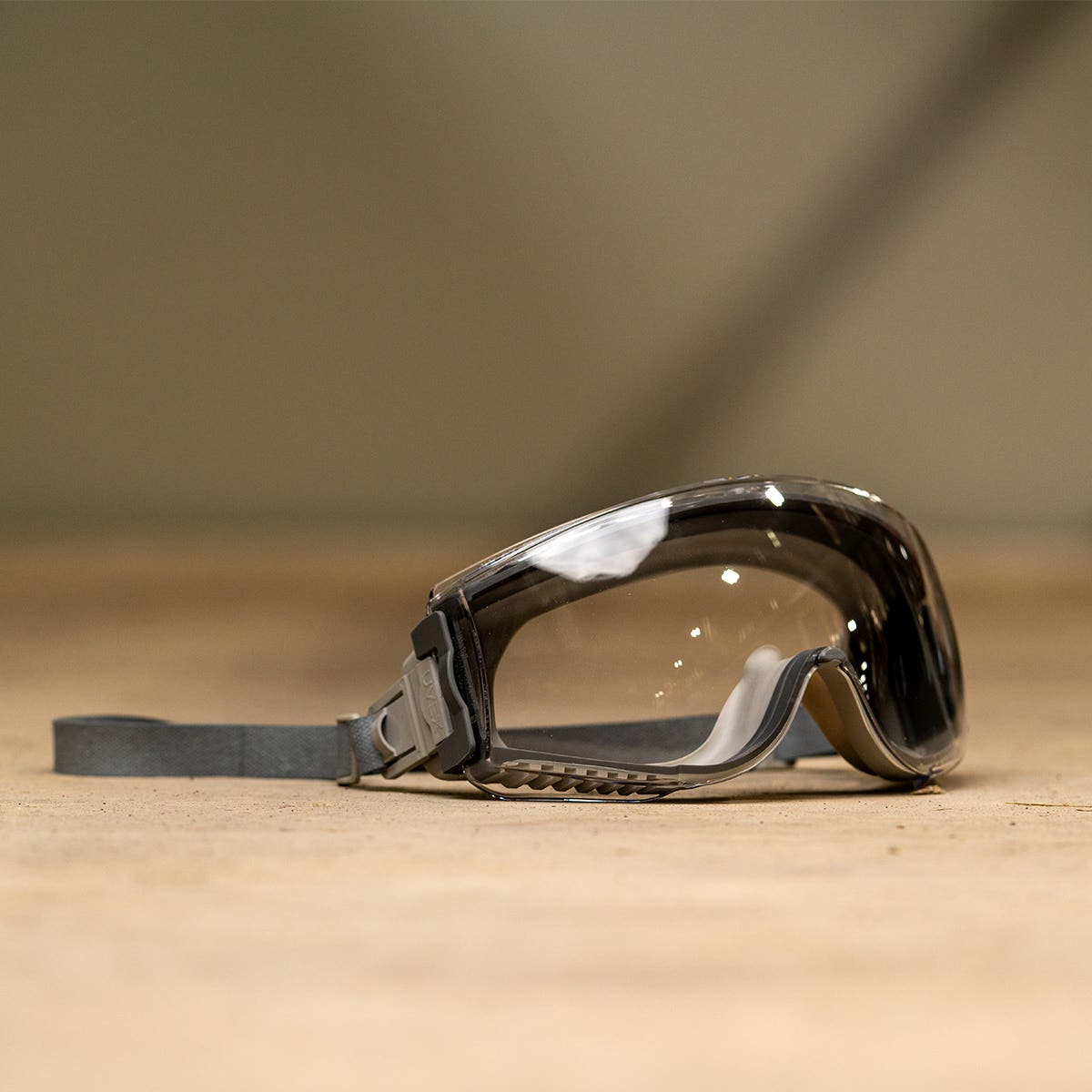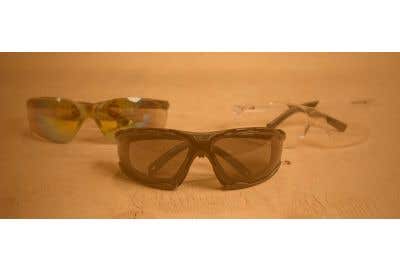*Disclaimer*
The information contained on this page is for promotional and informational purposes only. All equipment should be used by trained professional tradesmen who have been trained how to use the equipment described on this page, and understand the risks of their work. PowerPak assumes no responsibility for errors or omissions in the use or misuse of any product purchased. In no event shall PowerPak be liable for any direct, special, indirect, consequential, or incidental damages or any damages whatsoever, whether in an action of contract, negligence or other torts, arising out of or in connection with the use of this information or the contents of this page. PowerPak reserves the right to make additions, deletions, or modifications to the contents on this page at any time without prior notice.
This isn't breaking news. We've all heard it, and we all know it. “You have to wear safety glasses.”
Just as important as wearing protective eyewear is wearing the RIGHT protective eyewear. Some workers think it doesn’t matter and that as long as you have a pair of safety glasses on, you are good.
Do your safety glasses meet safety regulations and standards set by OSHA and ANSI for features like impact protection, splash protection, and UV? In some cases, safety glasses without the correct safety features can do more harm than good.
Additionally, it's worth considering that maybe safety glasses aren’t the right PPE for the job. Maybe, you need safety goggles or a full-face shield.
There is a lot to consider. We will break it down part by part.
Potential Eye Hazards at Work
The stakes are high. When people think of hazards to your eyes, they think of flying debris and objects, but hazards come in all shapes and forms. Some hazards damage your eyes instantly, and some damage your eyes slowly over time. In either case, the damage is often irreversible and will be something you'll have to live with for the rest of your life.
Ultraviolet Light: Like with sunglasses, a tinted pair of safety glasses that do not have UV protection can be more harmful than helpful because your pupils open wider and expose your eyes to more harmful UV rays. Always check the label to see if your eye protection offers UV protection.
Strong Chemicals: Splashes and fumes while working with chemicals and liquids that can damage your eyes.
Impact Resistance: Concrete, metal, wood, and other objects put your eyes at risk.
Bloodborne Pathogens: includes hepatitis and HIV from blood and body fluids.
Dust: Exposing your eyes to construction and environmental dust can result in both short-term and long-term irritation and conjunctivitis.
Infrared Light: Similar to UV light, prolonged exposure to IR light can cause irreversible damage to your eyes. IR exposure puts you at a high risk of cataracts.
Types of Protective Eyewear
Safety Glasses
It’s no surprise that the most common eye protection is safety glasses. Features are a big part of what makes eye protection work, and all of the essential features are regulated by the American National Standards Institute (ANSI). Specifically, ANSI standard Z87.1.


Safety glasses come in all shapes and sizes and have a wide array of optional features. Features like impact resistance and UV protection. Under ANSI Z87.1, each feature has an alphanumeric code. Most safety glasses have multiple features, and the code for those features can be found on the inside of one of the arms or etched into the lens.
These are the most common features and ANSI codes for eye protection:
- Z87 - impact rated
- Z87+ - high impact rated
- D3 - splash protection
- D4 - dust protection
- D5 - fine dust particle protection
- X - indicates eyewear has passed the fog test and can resist fogging
- W# - welding protection on a scale from 1.3 - 14
- U# - UV protection on a scale from 2 - 6
- R# - infrared light protection on a scale from 1.3 - 10
- L# - visible light filter on a scale from 1.3 - 10
Goggles
Safety goggles are the best protection for high-risk hazards. These provide the worker with protection from all directions, and they seal to your face to keep contaminants out. You can wear them on top of prescription glasses. Goggles can be rated for any of the features listed above, and additionally can have the following rating:
Face Shield
When a worker is exposed to hazards like severe heat, bloodborne pathogens, and chemicals, a face shield would be ideal for protecting the eyes and face. Workers should not use face shields as the only form of eye protection. Face shields should be worn with safety glasses or goggles for added protection.


Occupations that Require Protective Eyewear
Every occupation and every job is different. It is essential to select the eye protection designed and rated for the job’s specific hazards. As your tasks change, the hazards change, and your PPE should also change.
Here is the eye protection you should expect to need in some primary trades.
- Construction – Generally, construction workers require protection from debris and impact, but they may also require splash protection and dust resistance depending on the work.
- Mining – Mineworkers may be required to wear a combination of goggles, face shields, or safety glasses, depending on the specific hazards of the mine. Miners may need a full-face respirator with build-in goggles.
- Auto Repair – Mechanics and automotive workers often require safety glasses with impact protection and splash protection.
- Electrical Work – Depending on the electrical work, electricians and lineman may require any combination of the ANSI features, but most importantly, they need dielectric eye protection (no conductive parts).
- Welding – Welders should wear a combination of a welding helmet with either safety glasses or safety goggles that protect from impact, UV, IR, and dust if needed.
- Carpentry – Working with wood puts you at high risk of impact, debris, and dust hazards. A quality pair of foam-lined safety glasses with Z87.1+ impact protection would be ideal for this type of work.
- Plumbing – Plumbing contractors are at high risk of impact, splash, and potentially dust/atmospheric hazards.
Best Safety Glasses and Goggles
PowerPak offers a wide variety of eye safety options that are always in stock and ready for delivery.
Rockland Contractor Grade Safety Glasses are perfect for outfitting your crew with a straightforward set of safety glasses that offer ANSI Z87.1+ impact protection, 99% UV protection, multiple color/tint options, and optional anti-fog.
Rockland Precision Safety Glasses are a step up with the same features as the Contractor Grade glasses but with added comfort. These glasses feature flexible rubber nose pads, rubber-tipped arms, and a lightweight design that allows for comfortable, all-day wearability. Each pair comes with a lanyard helping prevent misplacement.
Rockland Premium Foam Lined Glasses are ideal for workers exposed to dust. These safety glasses have D3 (splash resistance) and D4 (dust resistance), making them ideal for jobs where the complete seal of safety goggles is not required, but extra protection is needed.
Chemical Splash Protection Goggles are a popular solution for work that requires robust protection that only a good pair of goggles can provide. These goggles are rated Z87.1+ for impact protection, 99% UV protection, anti-fog, indirectly vented, and they offer dust and splash protection.
ARC Rated Goggles are an advanced pair of safety goggles that offer the ANSI protection you’d expect, such as impact, UV, fog, and dust, but is additionally rated at 38 Cal/cm2 for arc flash protection. These goggles are a great addition to an arc flash kit.
OSHA Standards
The Occupational Safety and Health Administration (OSHA) has a handful of general requirements for eye protection in the workplace.
For starters, it is the employer’s responsibility to ensure that employees exposed to hazards wear eye protection that addresses that hazard. That includes requiring eye protection with sufficient side protection from flying debris or additional filters needed for different types of welding.
OSHA also specifies that prescription eyewear needs to be accounted for when outfitting workers with eye protection. There are a couple of options on this topic. There are safety glasses and goggles designed to fit over a pair of prescription glasses. Some eye protection has the option to order them with the prescription lenses built-in.
And, all eye protection needs to comply with the ANSI Z87.1 standards.
How to Protect Yourself at Work
Assessing workplace hazards is not difficult. It can be surprising when you stop and total up everything you're exposed to daily. This information will help inform the PPE choice you make beyond eye protection.
American Optometric Association advises knowing these tips for protecting your eyes from a workplace injury:
- Assess and be aware of workplace risks and hazards.
- Personal eye protection should be the last line of defense against hazards. All efforts should be made to eliminate any hazards at the source.
- Always use your eye protection.
- If your safety gear is not in good condition, get it replaced.
How to Protect Your Eyes in an Emergency Situation
In almost every eye-related emergency, you should seek immediate medical attention. You may not need to seek out a doctor or medical professional if the injury is minor and can be treated with an eyewash or general first aid.
But generally, an eye injury should be regarded as a serious injury. In the event of an incident, you need to assess what happened and know what first aid needs to be administered until emergency services can arrive.
There is no blanket response to a workplace injury. The first aid procedure will be different for different injuries, so team members must be trained and prepared to handle injuries related to the hazards in your workplace. And, it’s equally important to have easily accessible first aid supplies.
Make Safety Your Top Priority
The cost of safety is nothing when compared to the cost of an injury. A safe and healthy workplace is the right of all workers, and it helps draw valuable employees. Safe working conditions will benefit both the employer and the employees.
Visit PowerPak.net to outfit your team and jobsite with safety supplies and PPE. Contact us today for more information.







